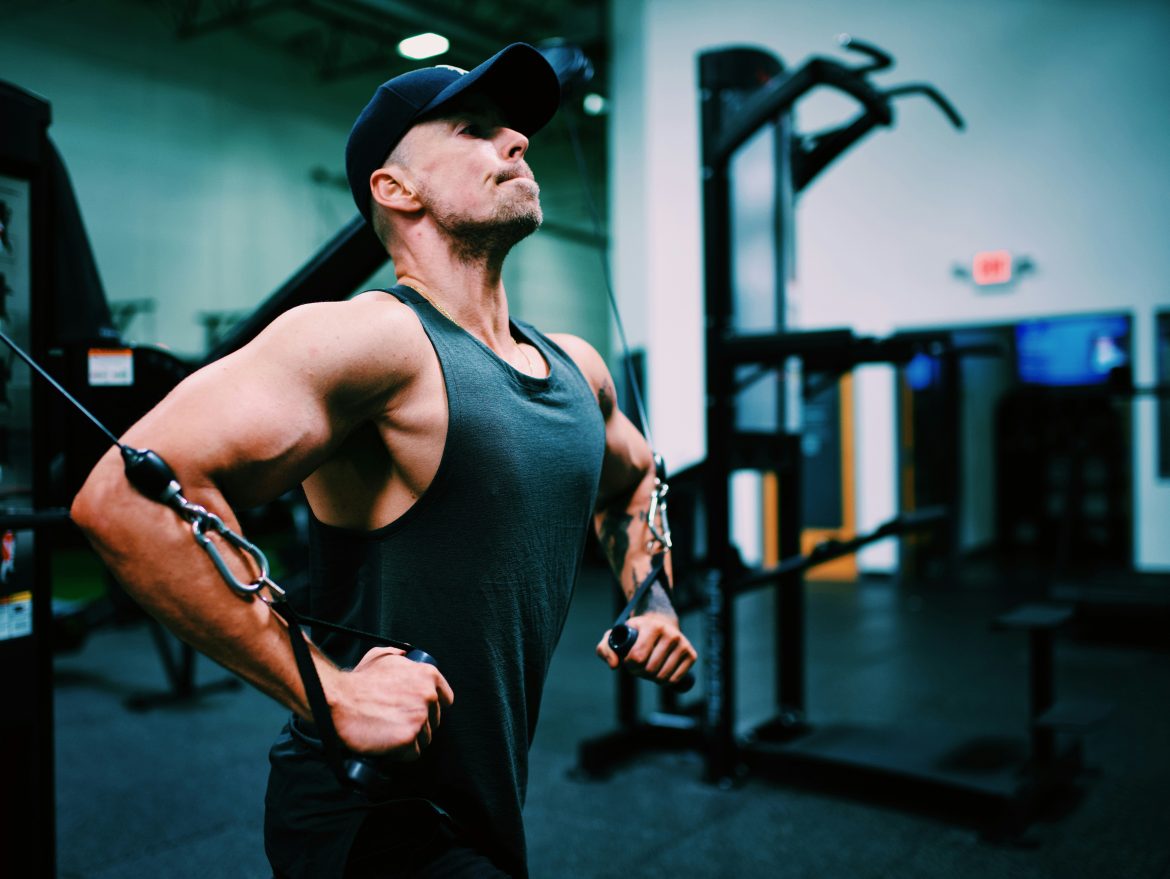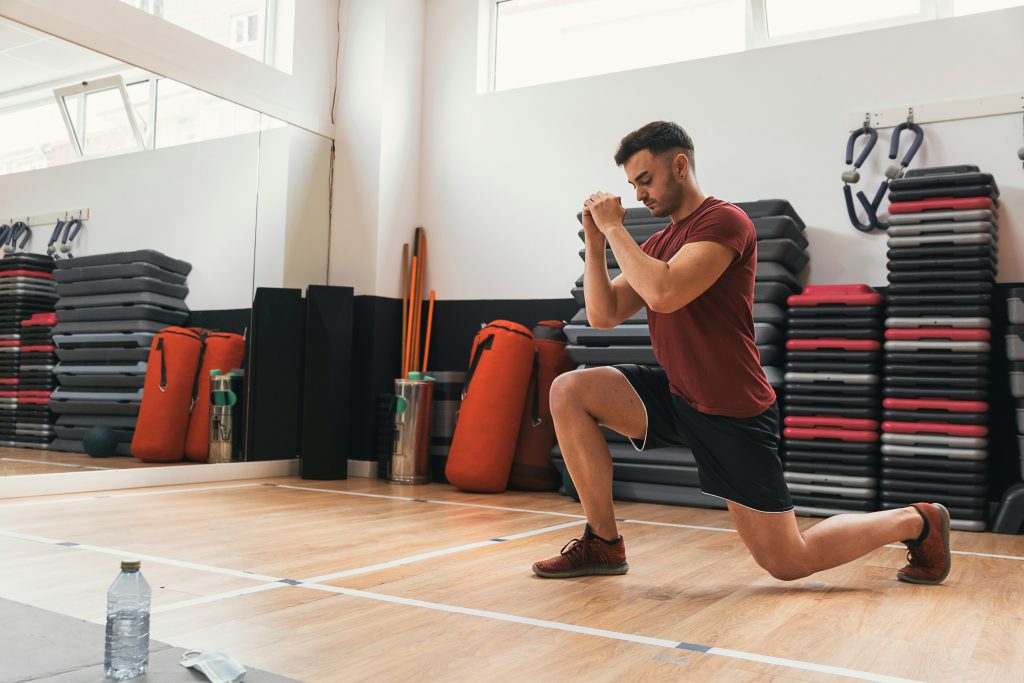In today’s fast-paced environment, efficiently incorporating fitness into a busy schedule is a common challenge. Recognizing this, the trend of midday workouts has gained traction, offering a practical solution for maintaining physical health amidst daily commitments. Fitness0.com is at the forefront, providing resources and guidance for effectively integrating exercise into a busy day. This guide aims to clarify the concept of lunchtime fitness, specifically catering to beginners.
Addressing the unique needs of those new to exercise, the content is structured to cover various aspects of midday workouts. Primary keywords such as ‘Midday Workouts’, ‘Quick Lunchtime Exercises’, ‘Office Workout Tips’, and ‘Beginner Fitness Routines’ are integrated throughout the text, ensuring relevance and searchability. Secondary keywords like ‘Fitness0.com Workouts’ highlight our dedication to delivering accessible and effective fitness solutions.
Did you know that a midday workout can boost your productivity and mood for the rest of the day? Discover how with Fitness0.com.
The article is organized into the following main topics, each providing detailed insights and practical advice:
- Quick Lunchtime Workouts for Beginners: This section focuses on efficient exercises that can be completed within a short lunch break. It emphasizes the importance of regular, consistent activity for health and well-being.
- Office-Friendly Fitness Moves: Here, readers will find exercises that are suitable for the office environment. These routines are designed to be discreet, not requiring much space or special equipment.
- Maximizing Your Lunch Break for Fitness: This part offers strategies for time management and workout planning, ensuring that individuals can effectively use their lunch break for exercise.
- Building a Midday Workout Routine: This section provides advice on setting realistic fitness goals, monitoring progress, and maintaining a consistent routine, catering to the evolving needs of individuals.
- Nutrition and Hydration for Midday Exercisers: The final part focuses on the importance of proper nutrition and hydration, offering tips on what to eat and drink before, during, and after a midday workout.
This introduction is designed to guide readers toward incorporating fitness into their daily routine, emphasizing the practicality and benefits of midday workouts for beginners. It encourages readers to explore the article for comprehensive guides, practical tips, and effective strategies.
Quick Lunchtime Workouts for Beginners
Quick Lunchtime Workouts offer a practical solution for those seeking to incorporate fitness into their busy schedules. This section provides a detailed overview of time-efficient exercise routines, beginner-friendly workout tips, and strategies to seamlessly integrate fitness into your workday, ensuring you make the most of your lunch break.
Time-Efficient Exercise Routines
Lunchtime workouts are designed to be brief yet effective. They focus on high-intensity, short-duration exercises that maximize health benefits within a limited timeframe. High-Intensity Interval Training (HIIT), brisk walking, and bodyweight circuits are examples of such routines that can enhance cardiovascular health, boost metabolism, and improve muscle tone efficiently.
Studies show that just 20 minutes of HIIT can burn more calories than 45 minutes of running on the treadmill.
Table: Sample Time-Efficient Exercise Routines
| Time | Workout Type | Expected Benefit |
|---|---|---|
| 10 min | High-Intensity Interval Training (HIIT) | Boosts metabolism, improves cardiovascular health |
| 15 min | Strength Training (Bodyweight Exercises) | Enhances muscular strength, improves posture |
| 20 min | Yoga/Pilates | Increases flexibility, reduces stress |
Beginner-Friendly Workout Tips
It’s essential for beginners to approach fitness with a mindset geared towards gradual improvement and adaptability. The emphasis is on understanding your body’s limits, starting with less intense exercises, and progressively increasing the challenge. Consistency is crucial, and it’s recommended to avoid overexertion to minimize the risk of injury and ensure a positive and sustainable fitness journey.
Balancing Work and Fitness
Incorporating fitness into a busy workday requires effective planning and a commitment to prioritize health. Planning your workouts ahead of time, preparing your workout gear in advance, and choosing exercises that can be performed in limited spaces without special equipment are key strategies. Integrating fitness into your daily routine should be as routine and non-negotiable as other daily activities like eating or sleeping.
Quick Lunchtime Workouts are an excellent way for beginners to introduce fitness into their daily routine. These workouts demonstrate that time constraints do not have to be a barrier to maintaining physical health. With strategic planning and the right set of exercises, you can effectively balance work and fitness, leading to improved well-being and productivity. Continue to explore more detailed guides and strategies in the upcoming sections to optimize your lunch break for fitness.
Office-Friendly Fitness Moves
Office-Friendly Fitness Moves provide an efficient approach to integrating exercise into the office setting, catering to the limitations and requirements of a professional environment. This section focuses on exercises that can be performed within the confines of an office space, promoting physical activity without disrupting the work routine.
Desk-Based Exercises
Desk-based exercises are specifically tailored to be performed in a confined space, typically requiring minimal equipment such as a chair or a desk. These exercises focus on maintaining muscle activity and circulation, countering the effects of prolonged sitting. Desk-based exercises include movements that target various muscle groups, are easy to perform, and do not require significant time.
A study found that incorporating just 30 minutes of desk-based exercises into your daily routine can increase productivity by up to 15%.
Examples of Desk-Based Exercises:
- Seated Leg Lifts: Engage the thighs and core muscles, easily performed while sitting.
- Desk Push-Ups: Use the desk as support to perform push-ups, targeting the arms and chest.
- Chair Dips: Utilize a stable chair to perform dips, focusing on the triceps and shoulders.
Low-Impact Office Workouts
Low-impact workouts are designed to be discreet and minimally disruptive in an office environment. These workouts typically involve exercises that are quiet and can be performed in a small area, making them ideal for a professional setting. They focus on improving flexibility, muscle tone, and overall fitness without causing distraction or requiring extensive space. Low-impact workouts are suitable for individuals at different fitness levels and are particularly beneficial for those seeking exercises that are gentle on the joints.
Equipment-Free Routines
Equipment-free routines offer the flexibility to perform exercises without the need for specialized gear or tools. These routines utilize body weight as resistance, providing a convenient and accessible way to engage in physical activity during the workday. Equipment-free exercises can be performed in various settings within the office, making them versatile and adaptable to different work environments. They offer a practical solution to staying active and maintaining fitness, even within the constraints of a busy office schedule.
In summary, Office-Friendly Fitness Moves are a viable and effective strategy for incorporating physical activity into a busy workday. These exercises are specifically designed to fit within the office environment, offering a convenient way to improve physical health, reduce stress, and increase productivity. By integrating these exercises into your daily routine, you can effectively maintain an active lifestyle, contributing positively to your overall well-being and work performance. Continue exploring the upcoming sections for more comprehensive strategies and tips to effectively combine fitness and professionalism.
Maximizing Your Lunch Break for Fitness
Maximizing Your Lunch Break for Fitness focuses on effective strategies to incorporate physical activity into your midday break. This section provides practical advice on managing your time, planning your workouts, and refreshing yourself after exercise, ensuring that your fitness routine complements your work schedule efficiently.
Time Management Tips
Effective time management is crucial for incorporating workouts into a busy lunch break. It involves planning and prioritizing your activities to ensure a balanced routine. Key strategies include scheduling workouts as specific calendar events, preparing exercise gear in advance, and setting a clear start and end time for your workout. These practices help in maintaining a structured and time-efficient workout routine that fits well within the constraints of a busy workday.
Employees who dedicate a portion of their lunch break to physical activity are 23% more productive than those who do not.
Structured Workout Plans
Having a structured workout plan is essential for an efficient and effective fitness routine. A well-organized plan helps in maximizing the limited time available during a lunch break. It should outline the types of exercises, their sequence, and the duration for each. Structured plans ensure that every minute of the workout is purposeful and contributes positively to achieving fitness goals, making workouts more focused and productive.
Post-Workout Refreshment
Proper post-workout refreshment is essential to transition smoothly from exercising back to professional duties. Effective strategies include engaging in cool-down exercises, staying hydrated, and consuming a balanced meal or snack. These practices aid in muscle recovery, rehydration, and ensuring that you are mentally and physically ready to resume work activities.
Table: Components of Post-Workout Refreshment
| Component | Description | Benefit |
|---|---|---|
| Cool-Down Exercises | Gentle stretching and breathing exercises | Aids in muscle recovery and reduces stress |
| Hydration | Drinking water or electrolyte-rich beverages | Replenishes fluids and prevents dehydration |
| Balanced Meal/Snack | A mix of proteins, carbohydrates, and healthy fats | Provides energy and aids in muscle repair |
In summary, effectively using your lunch break for fitness involves strategic time management, following a structured workout plan, and employing efficient post-workout strategies. These practices contribute to maintaining a balanced lifestyle, enhancing physical well-being, and ensuring productivity. By integrating these exercises into your routine, you can effectively utilize your midday break for health benefits, ultimately leading to a more balanced and active lifestyle. Continue exploring the following sections for more detailed guidance and practical tips to optimize your lunchtime fitness routine.
Building a Midday Workout Routine
Building a Midday Workout Routine involves practical steps and strategies to effectively integrate consistent physical activity into your lunchtime schedule. This section outlines the importance of setting achievable fitness goals, methods for tracking your progress, and tips for maintaining workout consistency, ensuring that your midday exercise regimen becomes a reliable part of your daily life.
Setting Realistic Goals
Identifying and setting realistic fitness goals is crucial for maintaining an effective workout routine. Assess your current fitness level, understand your available resources, and set clear, achievable targets. Well-defined fitness goals provide a clear roadmap for your workouts and serve as a motivation source.
Studies show that individuals with specific and realistic fitness goals are 30% more likely to achieve them compared to those without clear objectives.
Tracking Progress
Regularly monitoring your progress is essential to evaluate the effectiveness of your workout routine and make necessary adjustments. Various methods can be employed to track progress:
- Workout Log: Record details of your workouts, including exercises, sets, repetitions, and weights.
- Fitness Assessments: Perform regular assessments to evaluate improvements in strength, endurance, and flexibility.
- Fitness Apps: Use apps to track workouts, set reminders, and analyze performance over time.
Consistency and Adaptation
Maintaining consistency in your workouts is key to achieving long-term fitness results, while adaptability ensures that your routine stays relevant and engaging. Establish a manageable and enjoyable routine to encourage regular participation. Additionally, be prepared to modify your workout routine in response to changes, ensuring that it continues to meet your evolving needs.
Building a midday workout routine is about thoughtful planning, setting achievable goals, monitoring your progress, and maintaining consistency in your workouts. By adopting these practices, you can ensure that your lunchtime fitness routine becomes an integral and beneficial part of your daily life, contributing to your overall health and well-being. Continue to the following sections for more advice and strategies to enhance your workout routine and achieve your fitness goals.
Nutrition and Hydration for Midday Exercisers
Nutrition and hydration play critical roles in the effectiveness of midday workout routines. This section provides factual information on best practices for pre-workout nutrition, maintaining hydration during exercise, and the importance of post-workout nutrition for optimal recovery and muscle development.
Pre-Workout Nutrition
Effective pre-workout nutrition is fundamental for supplying the energy necessary for a successful workout session. It involves consuming a balanced combination of carbohydrates, proteins, and fats to fuel your body. The timing of your pre-workout meal or snack can significantly influence your comfort and performance during exercise.
Hydration Strategies
Adequate hydration is crucial for maintaining peak performance during your workout and aiding in recovery afterward. Ensure proper hydration by drinking water before, during, and after your exercise session.
Dehydration can reduce performance levels by up to 30%, highlighting the importance of adequate fluid intake before, during, and after workouts.
Post-Workout Meals
Nutrition following your workout is essential for muscle recovery and replenishing energy stores. A well-balanced post-workout meal should include:
- Proteins: Essential for repairing and building muscle tissue.
- Carbohydrates: Crucial for replenishing muscle glycogen stores depleted during exercise.
- Fats: Important for overall recovery and supporting bodily functions.
Eating a balanced meal containing these nutrients within 45 minutes to an hour after exercising can significantly enhance muscle recovery and prepare your body for future workouts.
Proper nutrition and hydration are key to the success of any fitness regimen, particularly for those engaging in midday workouts. By ensuring appropriate pre-workout nutrition, staying hydrated throughout your exercise, and consuming a balanced post-workout meal, you can maximize the benefits of your workout, support your body’s recovery process, and maintain a consistent fitness routine. Continue reading for more specific advice and actionable tips to effectively manage your nutrition and hydration in line with your midday exercise routine.
Conclusion: Lunch Hustle: Midday Workouts with Fitness0.com
This guide has systematically addressed the essential components of incorporating fitness into a midday routine. From establishing a structured exercise regimen to understanding the pivotal role of diet and hydration, this conclusion reinforces the strategies and insights necessary for a balanced lifestyle, even with a busy schedule.
Utilize the insights and strategies from this guide to transform your midday break into a time of rejuvenation and growth.
Key Insights:
- Time-efficient exercises are essential for integrating fitness into a busy day.
- Office-friendly workouts, including desk-based and low-impact exercises, provide feasible fitness solutions for the workplace.
- Effective time management and structured workout plans are key to maximizing the benefits of midday workouts.
- Setting realistic goals and tracking progress are vital for sustaining long-term fitness.
- Adequate nutrition and hydration are crucial for optimizing workout performance and recovery.
Effective fitness routines are not solely about the exercises themselves; they encompass preparation, execution, and post-exercise practices. Adequate nutrition before workouts provides the necessary energy, while proper hydration is crucial for maintaining performance levels and supporting recovery processes. After exercising, balanced nutrition aids in muscle recovery and energy replenishment.
A comprehensive approach to fitness involves more than just exercise. It includes setting achievable goals, monitoring progress, and maintaining consistency. Nutrition and hydration also play integral roles in supporting and enhancing your fitness journey. By implementing these strategies, you can ensure that your fitness routine becomes a sustainable and valuable part of your daily routine, contributing positively to your overall health and well-being. Continue to use the advice and tips provided to refine your approach to fitness, nutrition, and overall health.
Citations:
- 5 Short, Easy Workouts That Are Perfect For Your Lunch Break, Verywell Fit
- The Lunchtime Workout, Bodybuilding.com
- Top 10 Lunchtime Workouts, Realbuzz


